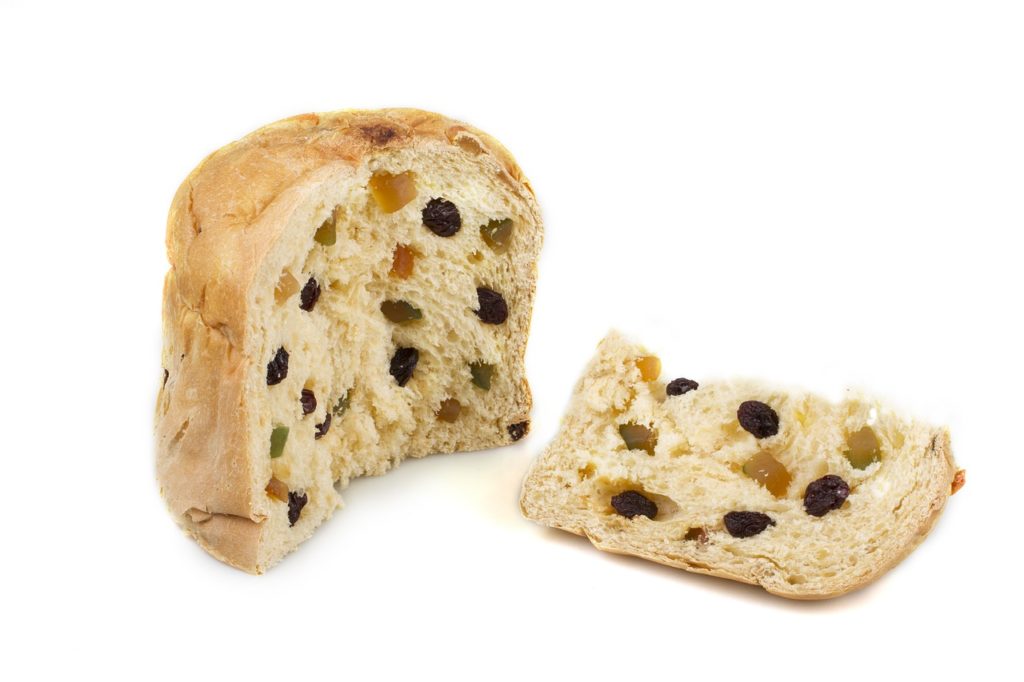Food, glorious food! A holiday calendar of recipes for foodies and cooks
 December 23, 2019
Category: Featured, Long, Purpose
December 23, 2019
Category: Featured, Long, Purpose
Food is the heart of every celebration, amirite?
Whether you celebrate Hanukkah, Christmas, Kwanzaa, or even the Seinfeld-invented Festivus “for the rest of us” (it’s a thing), there are certain dishes traditionally associated with the day(s). We’ve gathered some links to recipes to help you cook up a celebration.
Hanukkah
December 22-30
Sufganiyot
Sufganiyot, a kind of jelly donut, are associated with the holiday because the oil in which they are fried are a reminder of the Hanukkah miracle in which the small quantity of oil fueling the Temple’s menorah lasted eight days.
Recipe links:
Potato latkes
Recipe links:
###
Festivus
December 23
Meatloaf
The invented holiday — replete with Festivus pole and customary airing of grievances — has taken on a life of its own since the episode of the popular TV comedy Seinfeld (in which the “holiday” was explained) aired in 1997. A comfortingly quotidian meatloaf is purportedly the dish associated with its celebration.
Recipe links:
###
Christmas Eve
December 24
Tamales
Traditionally consumed after Misa de Gallo (Midnight Mass), no Mexican or Central American celebration of Nochebuena (Christmas Eve) is complete without tamales. The tamalada party to which you’ll invite all your friends and family to help you assemble and steam the tamales in advance is a pretty great holiday tradition too.
Link to video and recipe:
###
Christmas Day
December 25
Panettone
The classic Italian Christmas cake is available for purchase throughout Philadelphia, but if you want to try your hand at it, there are plenty of recipes that promise you success with this treat.
Recipe links:
Paul Hollywood’s Panettone (plus Mary Berry’s Bûche de Noël recipe, and more)
Steamed Christmas pudding
The holiday fruitcake’s classier British cousin.
Recipe links:
###
Kwanzaa
December 26 – January 1, 2020
Jollof rice
The holiday, established in the 1960s to celebrate African heritage, has food associations from Africa and from the diaspora. Regional African dishes (like Jollof rice), soul food, Caribbean and Brazilian specialties may all be part of this community-centered celebration.
Recipe links:
Accra/Fritters
Fritters of all sorts, from all reaches of the diaspora, can be part of the Kwanzaa board.
Recipe links:
Brazilian bolinhos de bacalhau (cod)
Southern (U.S.) fritters (corn)
###
New Year’s Eve and New Year’s Day
December 31 – January 1, 2020
Black-eyed peas
Almost all of the foods customarily eaten on New Year’s Eve and New Year’s Day are a symbolic wish for the year ahead. Black-eyed peas — part of the Southern dish of Hoppin’ John — are said to bring good luck, for example.
The beans are part, according to Jessica Harris (in a New York Times op-ed), of “African-American New Year’s culinary trinity: greens, beans and pig. The greens symbolize greenbacks (or “folding money”) and may be collards, mustards or even cabbage. The pork is a remembrance of our enslaved forebears, who were given the less noble parts of the pig as food. But without the black-eyed pea, which journeyed from Africa to the New World, it just isn’t New Year’s — at least not a lucky one.”
Hoppin’ John:
Greens:
Lentils
If your heritage is Italian, lentils are traditional New Year’s fare. Like greens, lentils — because they are shaped like coins — are supposed to bring prosperity in the coming year.
Pork:
Pork makes its appearance on a number of New Year’s tables — particularly in Pennsylvania where the tradition of eating pork and sauerkraut on the first day of the year hearkens to the commonwealth’s early German immigrants, and the belief that pigs, with their habit of rooting forward, are a symbol for progress.
But the descendants of German immigrants are hardly the only ones with a tradition of eating pork on this day. In South Philly, Mexicans will be eating the spicy pig-trotters-and-cow-tripe soup known as menudo on New Year’s Day, while in the North Philly barrio like on the island, Puerto Ricans will be cooking up a savory pernil.
Recipe links:
###
Three Kings Day/Epiphany
January 6, 2020
Rosca de Reyes/Three Kings Bread
For Mexicans and Mexican-Americans, the Christmas season doesn’t end until after Epiphany. The round or oval Rosca de Reyes with its candied fruit decoration is more usually purchased than baked at home these days, but it isn’t as complicated as it might seem. And it’s fun to eat. A figure of the infant Jesus is baked into it (if the little figure is porcelain), or cut and inserted into the bread from the bottom (if the little figure is plastic), so that one of those partaking in the bread gets a slice with the figure in it. That person is then obliged to throw a tamalada or party of some sort on February 2, the feast day of Our Lady of Candelaría (or Candlemas in other Christian traditions).
Recipe link:
###
Octavitas
January 14, 2020
Okay, this Puerto Rican holiday is new to me, so I don’t have any traditional recipes to link you to. But if you want to experience it rather than cook it, you’re in luck.
Cristina Martínez, the celebrated chef of South Philly Barbacoa, and María Mercedes Grubb, the chef of Gallo Negro in Santurce, Puerto Rico, will be joining forces to cook a four-course Octavitas dinner on January 14, at Reading Terminal Market.
The evening is part of the RTM’s Market to Table series, as well as a GUSTO culinary series event. GUSTO offers a glimpse of Philadelphia’s vast Latinx culinary community while raising funds for projects addressing the long-term needs of Puerto Rico in the aftermath of Hurricane Maria.Tickets for the event are $200 and are available here.
Trending News






















